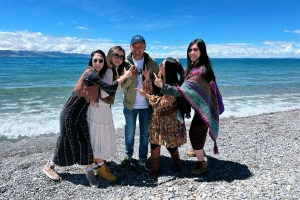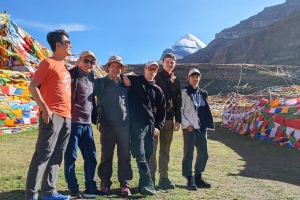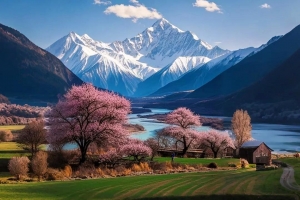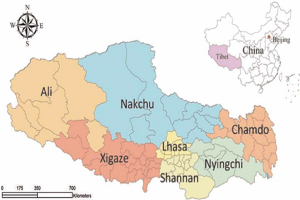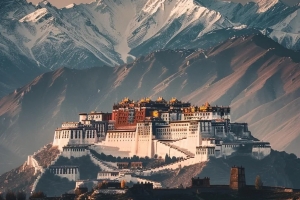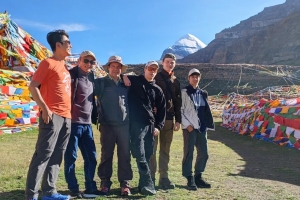The Tibetan Plateau, often called the “Roof of the World,” captivates visitors with its sweeping landscapes, majestic monasteries, and deeply spiritual culture. Yet behind the prayer flags and mountain silhouettes lies a social world that is equally rich and complex. For travellers and curious minds alike, understanding how love and marriage work in Tibetan society offers a unique window into both traditional life and modern shifts. Whether you’re visiting Lhasa or mingling in diaspora communities abroad, here’s a comprehensive cultural guide on Tibetan marriage customs, including their views on marrying outside the ethnic group and even beyond China’s borders.
The Traditional Foundations of Tibetan Marriage
In traditional Tibetan society, marriage is not just the union of two individuals but the merging of families and sometimes even clans. Historically, Tibetans practiced a variety of marriage customs depending on region, status, and religion. These customs are still alive today—albeit with evolving nuances.
In many rural communities, arranged marriages were the norm, with parents and lamas (religious leaders) playing a strong role in selecting spouses. These arrangements were based not only on compatibility but on economic and social alliances. While love matches now occur more frequently, family approval still carries considerable weight, especially among older generations.

Tibetan Buddhists often seek guidance from astrology and divination when determining auspicious dates for engagement or wedding ceremonies. The wedding itself is a blend of Buddhist ritual, community celebration, and regional flair—complete with elaborate dress, khata scarves, and a generous helping of butter tea.
Polyandry and Polygamy: The Unique Historical Practices
A particularly fascinating aspect of Tibetan marital history is polyandry—the practice of one woman marrying multiple brothers. This was especially common in agricultural communities where land inheritance was crucial. Rather than splitting family property between sons, all brothers would marry a single wife, preserving land within the family. While rare today, some isolated cases still exist in remote areas.
Polygamy (one man with multiple wives) also existed, particularly among the wealthy or in royal households, but it was far less common than polyandry.
Today, these practices are largely fading due to both legal constraints and changing social norms under Chinese governance.
Modern Tibetan Marriage: Urban Influence and Shifting Norms
Modernization, migration, and exposure to global cultures have significantly changed the marital landscape for Tibetans. Young people in Lhasa, Shigatse, and even in exile communities abroad often date, marry for love, and make personal choices independent of their parents’ wishes—though family involvement remains culturally important.
Education and economic opportunity have created new expectations for spouses. Tibetan women, in particular, now enjoy more freedom to pursue careers and education, and many marry later than their rural counterparts.

Still, rural and urban divides are stark. In villages, traditional roles and customs persist more strongly, whereas cities are melting pots of ideas and influences.
Interethnic Marriage within China
Tibetans have historically lived alongside Han Chinese, Hui Muslims, Naxi, Qiang, and other ethnic groups, particularly in multi-ethnic provinces like Sichuan, Yunnan, and Qinghai. Though not the majority experience, interethnic marriages between Tibetans and Han Chinese or Hui do happen—and are slowly becoming more common.
In general, Han-Tibetan marriages face varying levels of social acceptance depending on location. In more cosmopolitan cities, they may raise few eyebrows, especially if the Tibetan partner has assimilated into mainstream urban culture. In contrast, rural communities might resist such unions due to cultural, religious, or even linguistic differences.
From a legal standpoint, China places no restrictions on interethnic marriage, and the government has historically encouraged “ethnic unity.” Some interethnic couples may even receive social or economic incentives, particularly if one partner is classified as a minority.
Yet cultural friction can still exist. Tibetan Buddhism, vegetarian practices, family roles, and language differences can pose significant challenges in interethnic unions—particularly when extended family is involved.
Foreign Marriages and Global Love Stories
Beyond China’s borders, Tibetans—particularly those in the diaspora—have embraced intercultural marriage to a higher degree. Communities in India, Nepal, Europe, and North America have seen Tibetans marry Indians, Nepalis, Westerners, and others. In places like Dharamsala, where many Tibetans live in exile, cross-cultural relationships are part of the norm, especially among younger generations.
Inside Tibet and other parts of China, Tibetans have also married foreigners—usually individuals who come for work, study, or spiritual pilgrimage. These unions are rarer and can involve bureaucratic red tape, especially in sensitive regions like the Tibet Autonomous Region (TAR), where foreign presence is tightly regulated.
Language barriers, cultural misunderstandings, and family expectations are often steep hurdles, but successful cross-cultural Tibetan marriages prove that shared values and mutual respect go a long way.

Religion, Identity, and Compatibility
Tibetan identity is deeply intertwined with Tibetan Buddhism, so marrying outside the faith can be a point of tension—especially for devout families. However, many modern Tibetans, particularly those with urban education or diasporic backgrounds, adopt a more flexible view.
Some choose to convert to Buddhism for marriage, while others adopt a syncretic or secular approach. What matters most often isn’t doctrinal alignment but respect for Tibetan traditions and customs—especially during weddings and festivals like Losar.
Advice for Foreigners Interested in Tibetan Partners
If you’re a foreigner drawn to the charm and warmth of Tibetan people, here are some practical and respectful tips:
-
Learn the culture: Show genuine interest in Tibetan language, food, and religion. This builds mutual respect and helps bridge gaps.
-
Respect family and elders: Even in love marriages, family approval can be vital.
-
Expect cautious openness: Tibetans are often polite but private, especially in conservative communities. Don’t rush; build trust.
-
Prepare for complexity: You may face bureaucratic, linguistic, or cultural hurdles, but patience and sincerity will serve you well.
Love Across Mountains and Cultures
Tibetan marriage, like the people and land itself, is layered, spiritual, and evolving. From ancient polyandry to modern interethnic unions, the journey of love in Tibet is not linear—but it is profoundly human. Whether you’re a cultural explorer, a curious visitor, or someone in love with a Tibetan soul, understanding these dynamics opens the door to deeper, more meaningful connections.
In the Land of Snows, love is as enduring and multifaceted as the mountains themselves.

